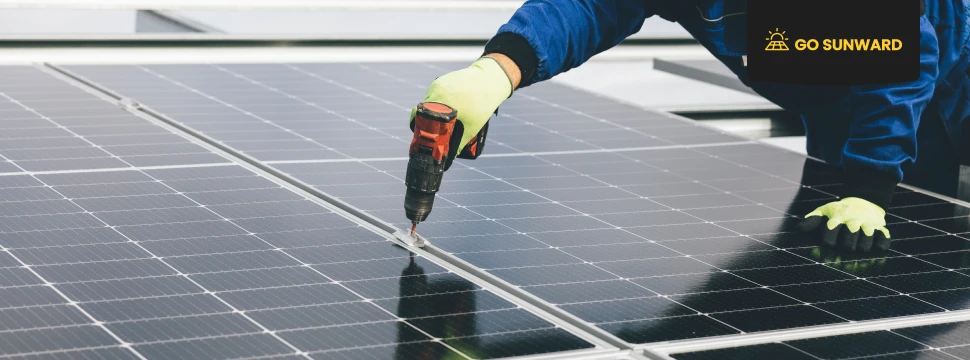10 Energy Saving Tips You Can Implement At Home
Amid a backdrop of rising environmental concerns, a greater focus on sustainability and a cost of living crisis, there’s never been a better time to take control of your energy consumption and household electricity bills. Our research shows that the majority of households across the United States spend between 2 – 3% of their annual income on electricity. In recent years, as prices have increased, more and more US households are reducing or skipping basic expenses, such as medicine or food, to pay an energy bill. The good news is that you can take many simple and effective steps in your home to significantly lower your energy usage and bills, from turning appliances off, adopting renewable energy, switching to LED lights and power-saving devices, and insulating your home. This article will delve into 10 actionable energy saving tips you can easily implement in your home. These will not only reduce your increasing electricity costs but also boost your environmental sustainability credentials.
Energy Saving Tips
The average electricity usage and cost for a house in the US can vary widely based on factors such as the size of the house, the region it’s located in, the efficiency of appliances, and the local utility rates. As a rough estimate, in 2021, the average annual electricity consumption for a US residential utility customer was 10,632 kWh, an average of about 886 kWh per month (according to the EIA). In terms of costs, the US annual average retail price of electricity was about 12.49¢ per kWh in 2022, with average residential electricity prices higher at 15.12¢ per kWh.
Understanding that different appliances, habits, and practices have varying electricity consumption rates is crucial when it comes to managing your energy usage effectively. By identifying the factors contributing to your energy consumption, you can make informed decisions to reduce your electricity bills and environmental impact. The following chart provides a helpful summary of common household items and activities and their respective electricity usage, offering insights into where you can make changes for more efficient energy management. For more info on what costs a lot of electricity in the home, click here.
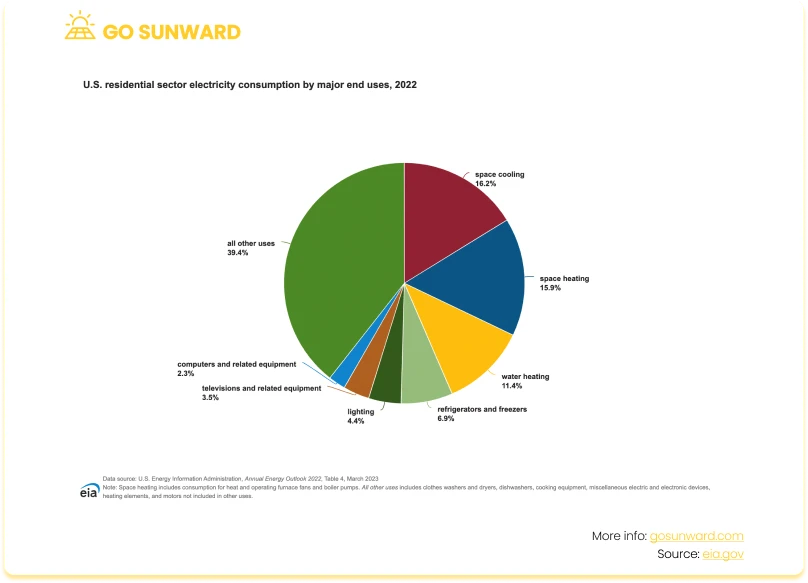
So how can you lower your electric bill and reduce consumption in the home? Here are the top 10 most effective energy saving tips:
Energy Saving Tip # 1: Upgrade to Energy-Efficient Lighting
Making the switch to energy-efficient lighting and light bulbs can yield both environmental and financial benefits. You have a variety of energy-efficient light bulb options to choose from, ranging from LEDs and CFLs to Halogens, catering to your specific lighting requirements and budget constraints.
These energy saving lights consume significantly less energy than traditional incandescent bulbs. Moreover, LED and CFL bulbs boast an impressive lifespan, often lasting up to 25 times longer than their incandescent counterparts. This longevity means fewer bulb replacements, further saving you money and reducing waste.
To maximize the benefits, it’s essential to choose the right lighting for each room in your home. Consider factors like brightness, color temperature, and the room’s purpose to select the most suitable bulbs. For more information on the technology behind these lights, click here.
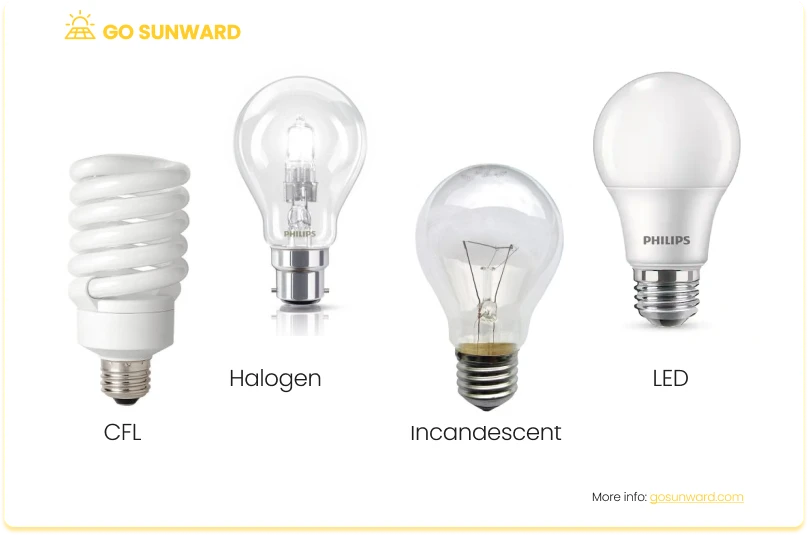
Energy Saving Tip # 2: Unplug Vampire Devices
Unplugging vampire devices is a vital step toward achieving energy efficiency in your home. These seemingly innocuous culprits, such as chargers, televisions, printers, games consoles and microwaves are all common vampire devices which continue to draw power even when not actively used, contributing to unnecessary energy consumption.
To tackle this issue, consider using smart power strips that allow you to conveniently disconnect multiple devices with a single switch. Another effective strategy is developing a habit of unplugging chargers when they’re not charging. By taking these proactive steps, you can put an end to energy waste, trim your electricity bill, and make a substantial contribution to both your financial savings and environmental sustainability.
Energy Saving Tip # 3: Seal Leaks and Insulate
Efficiently sealing gaps and insulating your home can be a game-changer when it comes to energy savings. By preventing warm or cool air from escaping and blocking external temperature influences, you create a more comfortable living environment while reducing the workload on your heating and cooling systems. Common areas prone to leaks include windows, doors, and gaps around pipes, vents, and electrical outlets. These openings can allow conditioned air to escape and let in unwanted drafts, driving up your energy bills.
For the proactive homeowner, many sealing and insulation projects can be tackled as DIY projects. Simple solutions include using weatherstripping or caulking to air seal gaps around windows and doors, installing door sweeps to prevent drafts, and adding foam gaskets behind switch plates and outlets to minimize air leaks. However, it’s often advisable to seek professional assistance for larger or more complex projects, especially those involving attic or wall insulation. Professionals can ensure the job is done correctly and you get the most out of your insulation efforts.
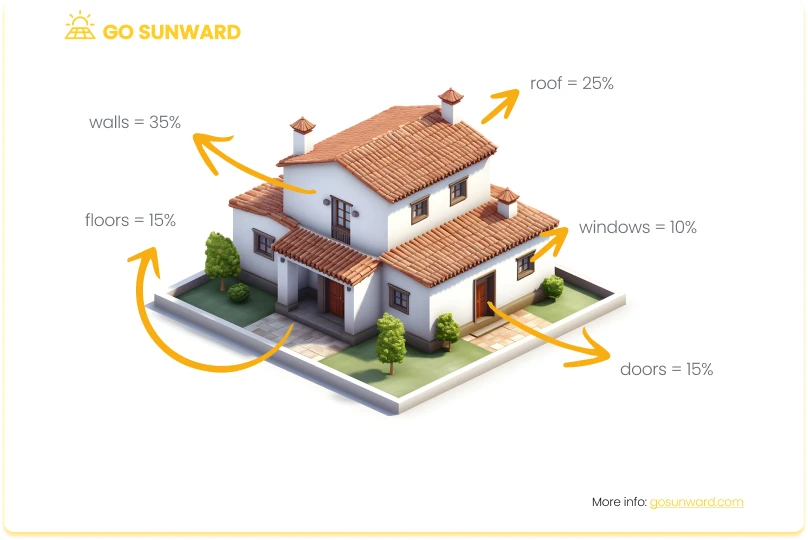
Energy Saving Tip # 4: Adjust Thermostat Settings
Efficiently managing your thermostat settings is a key strategy in achieving both energy savings and comfort in your home:
- Efficient Thermostat Settings: Start by finding a temperature balance that suits your comfort while minimizing energy consumption. During the colder months, consider setting your thermostat to around 68°F (20°C) when you’re at home and awake. Lower it when you’re asleep or away to reduce heating costs. In summer months, aim for a setting around 78°F (26°C) while you’re home and active. Adjust it higher when you’re not around to lower cooling expenses.
- Programmable Thermostat: Installing a programmable thermostat can revolutionize your energy-saving efforts. These devices allow you to create personalized heating and cooling schedules that automatically adjust temperatures based on your daily routines. You can program them to lower the temperature when you leave for work or go to bed and raise it before you return home or wake up. This intelligent automation ensures your home is comfortable when you need it to be, without wasting energy when you don’t.
- Wear Appropriate Clothing: Another practical approach to reducing heating and cooling expenses is to dress seasonally. In colder months, layer up with warm clothing, use cozy blankets, and keep your extremities warm with socks and slippers. In warmer weather, opt for lightweight, breathable clothing and utilize fans to help circulate air and cool down your space. By adjusting your clothing to match the temperature, you can lessen your reliance on heating and cooling systems, ultimately reducing your energy bills.
Energy Saving Tip # 5: Optimize Heating and Cooling Systems
Managing your heating and cooling systems efficiently enhances comfort and leads to substantial energy savings. Regular maintenance, including changing air filters, cleaning ducts, and scheduling professional inspections, improves efficiency and prevents breakdowns.
You can also consider upgrading to energy-efficient air conditioning (HVAC) systems. Look for systems with high SEER (Seasonal Energy Efficiency Ratio) ratings for cooling and high AFUE (Annual Fuel Utilization Efficiency) ratings for heating. While the initial investment may be higher, the long-term energy savings can be substantial.
Implementing zone heating and cooling by dividing your home into zones and using smart thermostats or adjustable dampers reduces energy waste in unoccupied areas. Prioritizing maintenance, upgrading systems, and exploring zone heating and cooling options maximize efficiency, lowering energy consumption and utility costs.
Energy Saving Tip # 6: Use Energy-Efficient & Power Saving Appliances
One of the most effective measures you can take to reduce your electricity expenses is to upgrade your outdated, inefficient appliances with modern, energy-efficient models. Newer appliances incorporate state-of-the-art technology that consumes notably less energy, leading to substantial long-term savings on your electricity bills. Keep an eye out for the ENERGY STAR® label, a government-endorsed indicator of energy efficiency, when selecting your appliances.
Furthermore, a wide range of power-saving devices is readily accessible to enhance energy efficiency by addressing distinct aspects of energy consumption. For instance, voltage stabilizers and optimizers are designed to uphold steady voltage levels, thereby extending the longevity of appliances and curbing energy wastage. Energy monitors and smart plugs, on the other hand, meticulously monitor and regulate appliance power consumption. Power factor correction devices play a pivotal role in enhancing overall energy efficiency by rectifying power factor imbalances. Battery energy storage systems are instrumental in storing surplus renewable energy and serving as backup power sources. Meanwhile, home energy management systems seamlessly integrate various devices to monitor and fine-tune energy usage, offering valuable insights and control.
These power-saving solutions cater to a wide array of energy-saving requirements, with their effectiveness contingent upon individual preferences and the specific device chosen. To find out more about power-saving devices and whether they actually work, click here.
To learn more about #6, please see our guide: Do Power Saving Devices Work?
Energy Saving Tip # 7: Install Solar Panels
The popularity of renewable energy sources, such as solar panels and wind turbines, is on the rise due to their sustainability and cost-efficiency. Solar panels, for example, harness the sun’s energy, decreasing your dependence on grid electricity and offsetting long-term expenses. Government incentives and tax credits further enhance the affordability of renewable installations, reducing initial costs and expediting the return on investment.
Despite the significant upfront investment, self-generated electricity can result in ongoing savings on your monthly bills, making renewable energy systems financially wise. Additionally, with their low maintenance requirements and extended lifespan, these systems not only save money but also contribute to a greener, more sustainable energy landscape. LINK>!
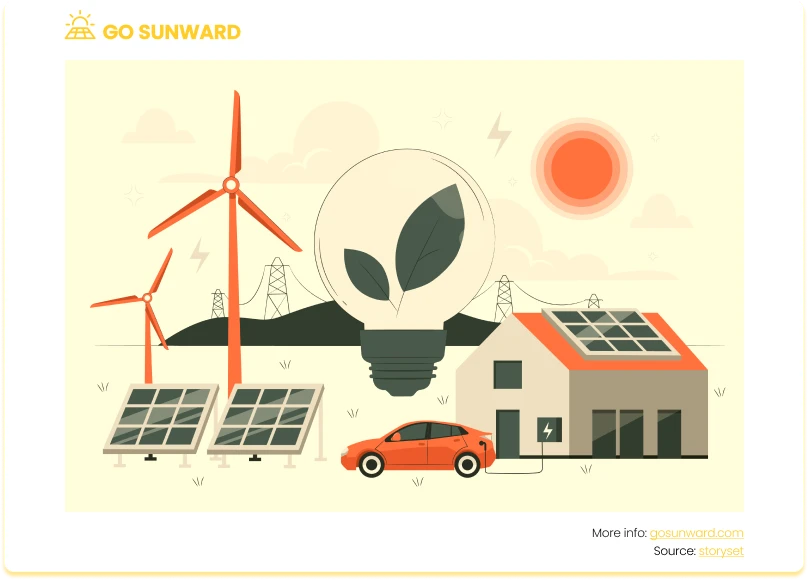
Energy Saving Tip # 8: Reduce Water Heating Costs
Water heating constitutes a significant portion of household energy expenses and natural gas usage. To address this, consider several strategies to lower your water heating costs. Start by adjusting the thermostat on your water heater to a lower setting, typically around 120°F (49°C), which reduces energy consumption. Another effective measure is insulating your water heater and pipes to retain heat, leading to substantial energy savings over time.
Additionally, installing low-flow showerheads and faucets is highly beneficial, as they reduce hot water usage while preserving water pressure, resulting in both energy and water savings.
Energy Saving Tip # 9: Practice Energy-Efficient Cooking
When it comes to energy-efficient cooking, adopting some simple yet effective techniques can make a significant difference. Start by using lids on your pots and pans to trap heat, which not only reduces cooking times but also minimizes energy consumption. Carefully selecting the right cookware and appliances, such as induction stovetops or convection ovens, can further lead to substantial energy savings.
The practice of batch cooking and meal planning is also important, as these save energy and valuable time and money. By preparing larger quantities and reheating leftovers when needed, you can decrease the cooking frequency, which often involves the energy-intensive process of preheating ovens and stovetops. These energy-conscious cooking habits not only benefit your utility bills but also contribute to a more sustainable and efficient culinary lifestyle.
Energy Saving Tip # 10: Change Energy Consumption Habits
In addition to benefiting from technological advancements, incorporating energy-efficient habits into your daily routine can significantly reduce electricity expenses and minimize your ecological footprint. These small yet impactful adjustments in your actions can yield substantial benefits for both your wallet and the environment.
Begin by instilling the practice of proactively switching off lights and appliances when they’re not actively in use. Additionally, consider implementing measures such as taking shorter showers to reduce both electricity and water usage, further contributing to energy conservation and eco-friendliness.
Conclusion
In this article, we have explored 10 practical and effective energy-saving tips you can implement in your home to reduce your environmental footprint and household expenses. Whether you opt for solar panel installations, switch off appliances, or transition to energy-efficient LED lighting, these minor adjustments can significantly transform your household’s energy consumption patterns and, consequently, your utility bills.
By embracing these changes, you’re reducing your environmental footprint, tackling climate change and also enhancing your financial well-being through efficient energy management.




